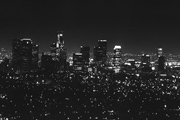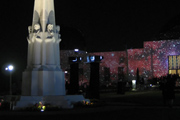About Me
Like so many other amateur astronomers, my introduction to astronomy was at a young age. My father owned one of the now legendary orange Celestron 5" SCTs in the late 70s. I recall viewing Jupiter, Saturn, and the Moon through it on many occasions, and being amazed. At the age of 12 I received a 2" refractor (probably a Tasco) and table-top tripod as a gift. I used it to peer at birds in the backyard, view distant power lines and transformers, and to peek at the top of Mt. Wilson from my backyard in San Gabriel.
Once I turned that little telescope toward the night sky and found objects I had only seen in books (like the Orion Nebula, the Andromeda Galaxy, and the Pleiades) I was drawn to the sky forever. From that point forward my piggy bank, my wallet, my checking account, and my credit cards would never be the same.
Since then, I've owned (in chronological order) a Jason 3" Schmidt-Newtonian, Coulter Optics 10.1" Odyssey Compact Dobsonian (blue tube), Meade 10" LX200 (later replaced with the LX200GPS), William Optics Megrez 80mm APO triplet refractor, and a Takahashi TOA-130F APO triplet refractor. My current equipment is shown here.
In 1999, with the purchase of my 10" LX200, I finally had a telescope that tracked the objects I was viewing. Not only that, but it also slewed to just about any object I commanded it to! Up to that point, star charts and star-hopping was how I found objects in the sky. Star-hopping is an important step to learning the night sky. But after 15+ years of that, I felt it was time to let technology do the work!
Toward the end of 2002, I made a purchase that changed my approach to this hobby forever: a used SBIG ST-7 CCD camera. At the time, I used my 10" LX200GPS and William Optics 80mm Super APO to image the skies. I found out, as others did, that using the LX200GPS for imaging had its challenges. As a result, I started MeadeLX200GPS.com (which no longer exists). Ultimately, I found myself imaging with the wide field APO more often than the SCT.
I currently live just outside LA County in the Inland Empire... well within the "white" light pollution zone of the greater Los Angeles area. I work as a digital marketing professional in the financial technology industry.
While I attempt to image from home occasionally, I'm most successful imaging from dark sky locations such as the RAS site in Landers (GMARS), Mt. Piños, Joshua Tree National Park, Borrego Springs (during Nightfall), and various spots in the Mojave National Preserve. In my search for dark skies in California, I've traveled as far as Adin for the 2008 Golden State Star Party.
In 2010, I was fortunate enough to start and complete construction of a permanent observatory in Landers, California!
Thanks for visiting!
Daniel Perry



